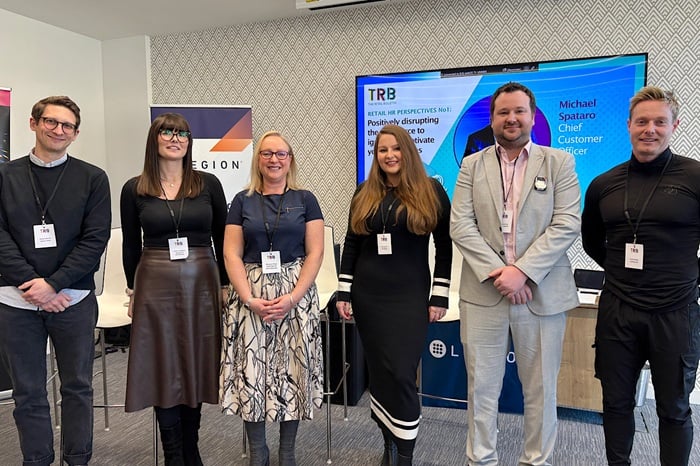Bringing belonging to the workplace
As recruitment and retention become increasingly challenging retailers should focus greater attention on the important dynamics of communications, culture and engendering belonging among the workforce. These ultimately result in improved colleague and customer experiences.
Speaking at The Retail Bulletin HR North conference in Manchester Sarah Eglin, director of people & culture at Barnardo’s, told delegates: “There is a need for belonging – the basic human need for connectivity, appreciation and value. As people professionals we’ve not articulated it yet. Covid-19 changed the expectations of work and there was a de-masking of people having a workface and then home [face]. For leadership this unmasking involved recognising people differently.”
For Perry Timms, founder & chief energy officer at People & Transformational HR, this sense of belonging also ties into culture, which he suggests is very much about feeling but often when companies say they are changing their culture it simply involves a rebranding, which he derogatively regards as “theatre culture”.
More people science needed
Never Miss a Retail Update!He suggests there is insufficient science in the boardroom relating to people and that simple things like the terms ‘induction’ and ‘probation’ are not really belonging-type words. ”The solutions to belonging should be done very early for employees. This then generates loyalty and saves companies money on recruitment,” he suggests.
Sarah Cunningham, group talent acquisition manager at Watches of Switzerland Group, says that as part of its recruitment activities it investigated whether it looked after its people. It found that many people are actually on the verge of homelessness – such as sofa-surfing – and this revelation led to it linking up with the charity Crisis. Two young people it has helped have been brought in as employees and they now help the company with attracting people and on-boarding.
Such initiatives would no doubt be helped by Eglin’s view that HR should be freed from rolling out more processes – such as policies and scheduling – and instead be allowed to consider how to deliver on colleagues’ expectations: “You have to step outside the process and consider colleague experiences. If they feel a belonging then all outputs will be far better than any process you put in place, which invariably have caps [on what they can achieve].”
Initiating conversations
Having the right culture and sense of belonging undoubtedly creates the foundations for better communications and openness in the workplace, which encompasses mental health. Dave Scholes, conversation starter at Six Connections, says employers are in the best position to communicate about mental health but only if they have a culture of health and care.
“If you are not valued in the workplace then you’ll never have the conversation about mental health,” he says, adding that often companies can be nervous about getting it wrong and to overcome this Scholes recommends they simply need to be curious about mental health.
Diversity in the workplace can also be helped by improved communication. This needs to be aligned with the empowerment of people, according to Anne-Marie Lister, consultant for Spirited People & Change Consultancy and former chief people officer at Atom bank, who says: “Acknowledge where you are on diversity. I’ve seen little clarity on it in organisations. It is brilliant having a space to talk but to what end? Companies need to empower people to achieve diversity. An organisation giving clarity on it is [successfully] handing over the challenge of diversity to its employees.”
Helping with recruitment
Diversity in the workplace undoubtedly helps with recruitment and retention, which continues to be a challenge for retailers. Michael Spataro, chief customer officer at Legion, says research undertaken for the company’s ‘State of the Hourly Workforce UK’ report found that as many as 62% of people plan to leave their retail jobs in the next 12 months.
One factor is the rise in shoplifting and violence in stores, which Mike Jennings, head of sales for UK Retail at Reveal Media, says needs the involvement of HR in order to create a “culture of care” in businesses. Although he says there is no silver bullet to solving the problem for some retailers body-worn cameras can help the situation. “HR teams need to be involved in the process…to build solutions around people. I implore HR to work with their fraud prevention and tech departments,” he says.
Empowering employees
Another factor deterring people from staying in retail is the lack of control over their schedules. Legion works with retailers to provide an AI-powered solution to automate scheduling, which improves efficiency for retailers while also ensuring employees have a much better chance of having schedules that give them flexibility and encompass their preferences.
“We create schedules that are conducive to [retailers’] sales expectations while also including employee preferences. Shifts can be selected and swapped, which is all possible through intelligent automation,” says Spataro.
Bringing in a new system was also instrumental in David Nottage, head of talent attraction & acquisition at Footasylum, helping move the business away from its problem attracting candidates to it being an employer of choice. “People did not see the long-term value in working there. The goal was to focus on what great looks like and selling the value of what we were doing. There was no real workforce management process in place,” he says.
People are more than CVs
Nottage ultimately brought in a new ATS (Applicant Tracking System) that included the ability for candidates to include things like Spotify and TikTok within their profiles because “people are more than a CV”, he says.
This helped to turn things around from a situation where Footasylum had a mere 70 applications for 40 jobs when Nottage joined the company to it recently receiving 26,000 applications for 80 jobs. He has also switched from using agencies to attracting candidates directly through its own careers website.
What has been particularly effective at attracting Gen Z candidates is the ‘Day in the Life’ features that it runs, which he says “drive crazy application numbers”. It has been a similar situation for Alice Gaydon, talent acquisition & people lead at PZ Cussons UK & US, who says: “We’ve worked to build a LinkedIn presence including ‘Day in the Life’. Eighty per cent of employees are proud to work at PZ Cussons, which is great for talent acquisition.”
This also resonates with Rhianon Plews, head of HRBPs & talent at Watches of Switzerland Group: “Our recruitment model was built for volume and we changed this and the managers have been trained to hire better. They’ve started to talk about people stories. We don’t talk about the brands [we sell], we talk about the people who are in the company.”
Focusing on learning
Attracting people who are keen on L&D (Learning & Development) is important to Faye Ryder-Humphries, head of people at Wingstop UK, who says the company has created the Wingstop University that includes an end-to-end leadership programme (running across 18 months). All the training modules involve league tables and there are rewards for successful teams. “We have a big recognition culture…it makes it fun and people respond to it,” says Ryder-Humphries.
Laura-May Nardella, talent acquisition & development partner (Food) at Co-op, says there is a keenness for apprenticeships at the Co-op but there is often a struggle to attract people onto them because people are invariably time-constrained in retail. On the shop-floor she says the policy is that shift managers have to give employees time away from their roles in order that they can undertake the relevant desk-based type training modules.
The Retail Bulletin will be holding is annual Retail HR Central conference in Birmingham on 14 May. Register for free places here













